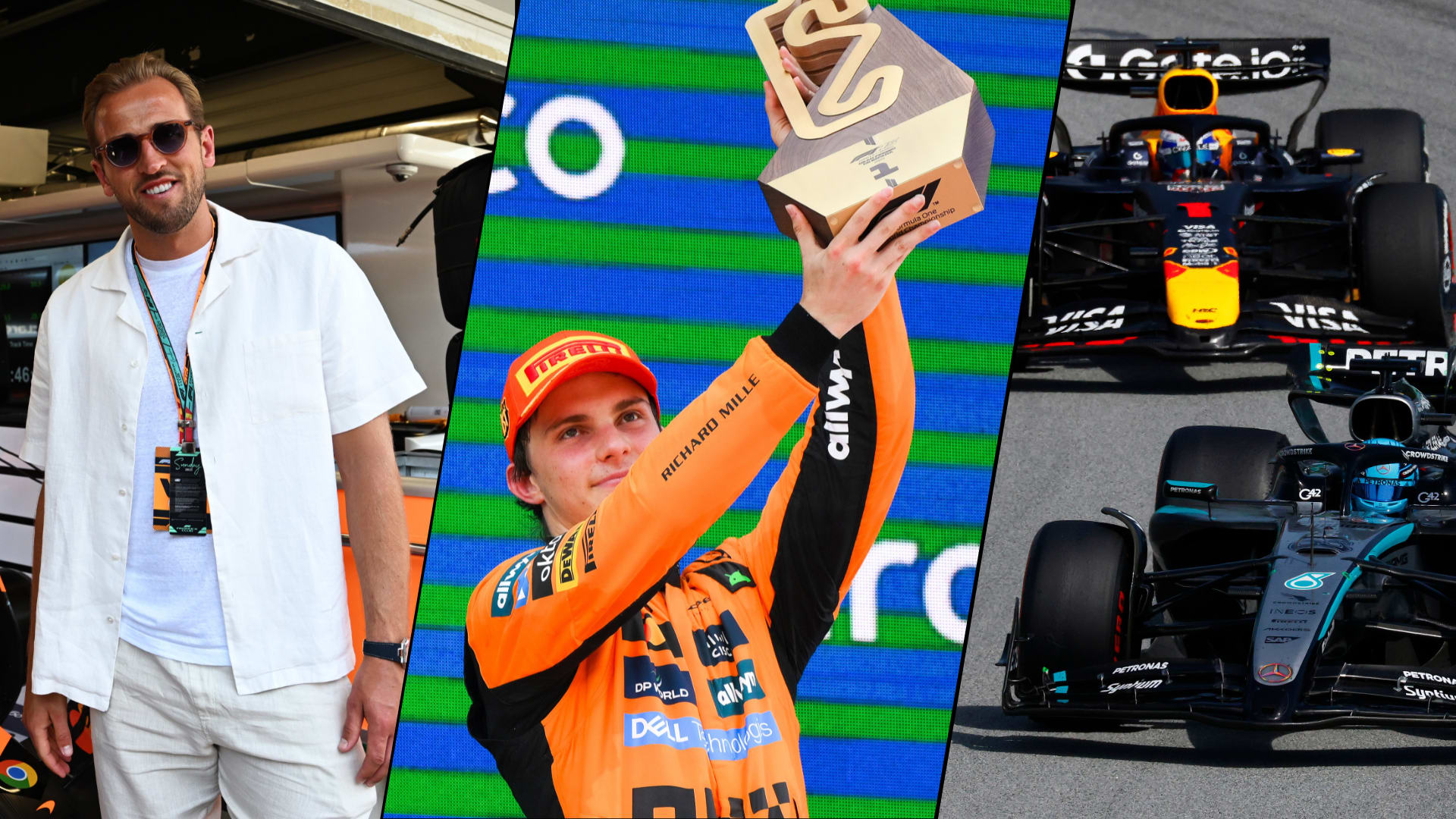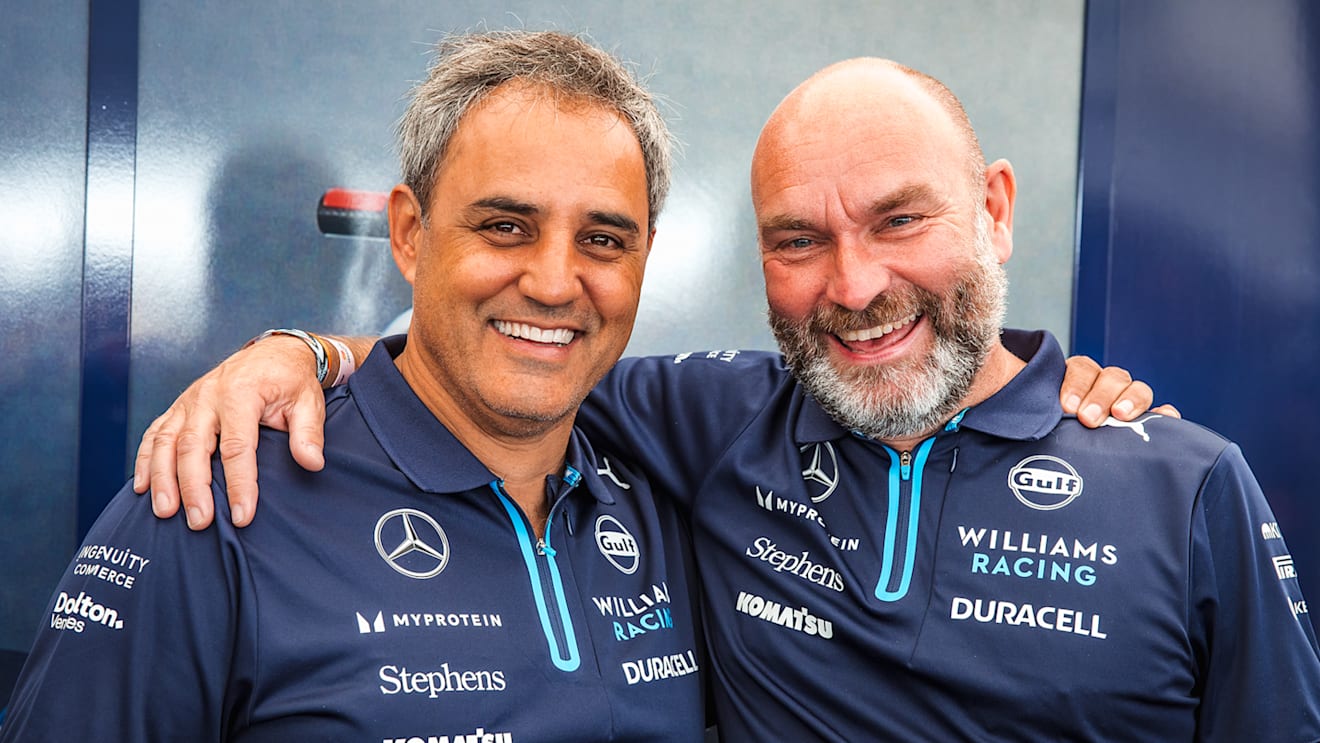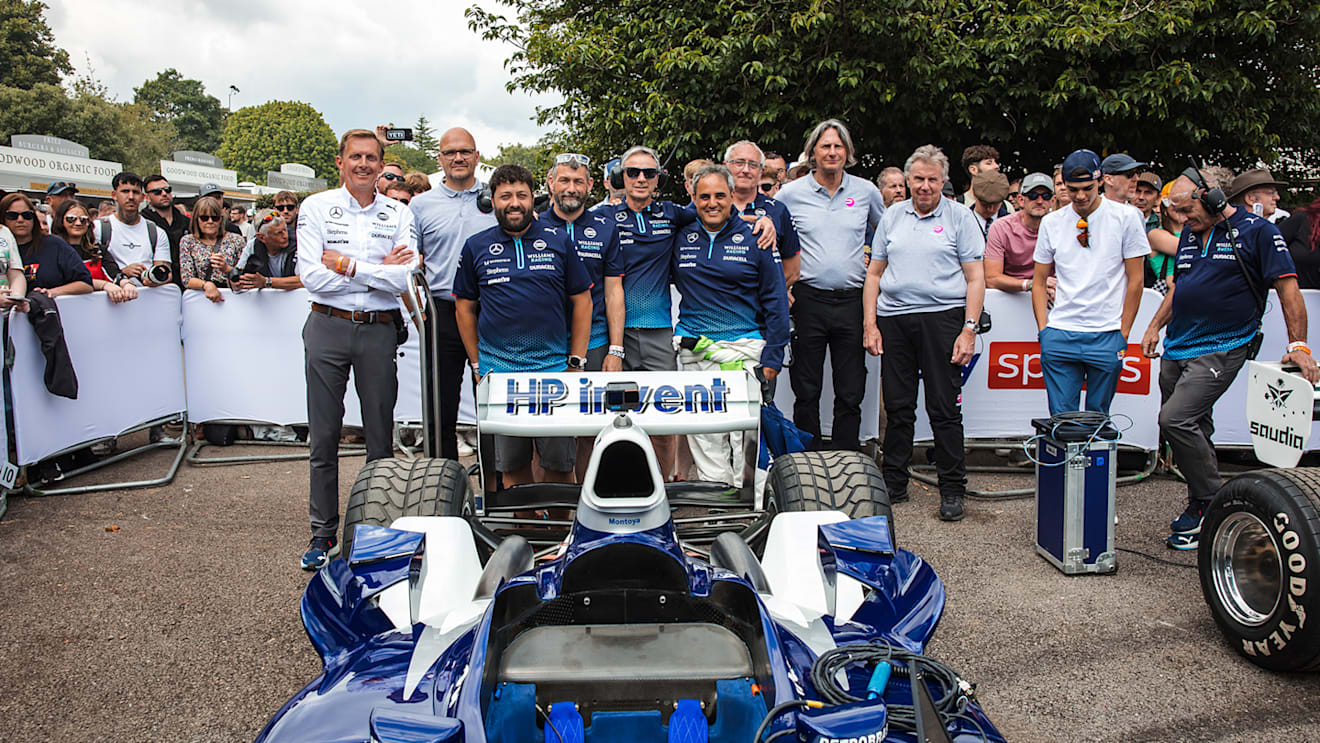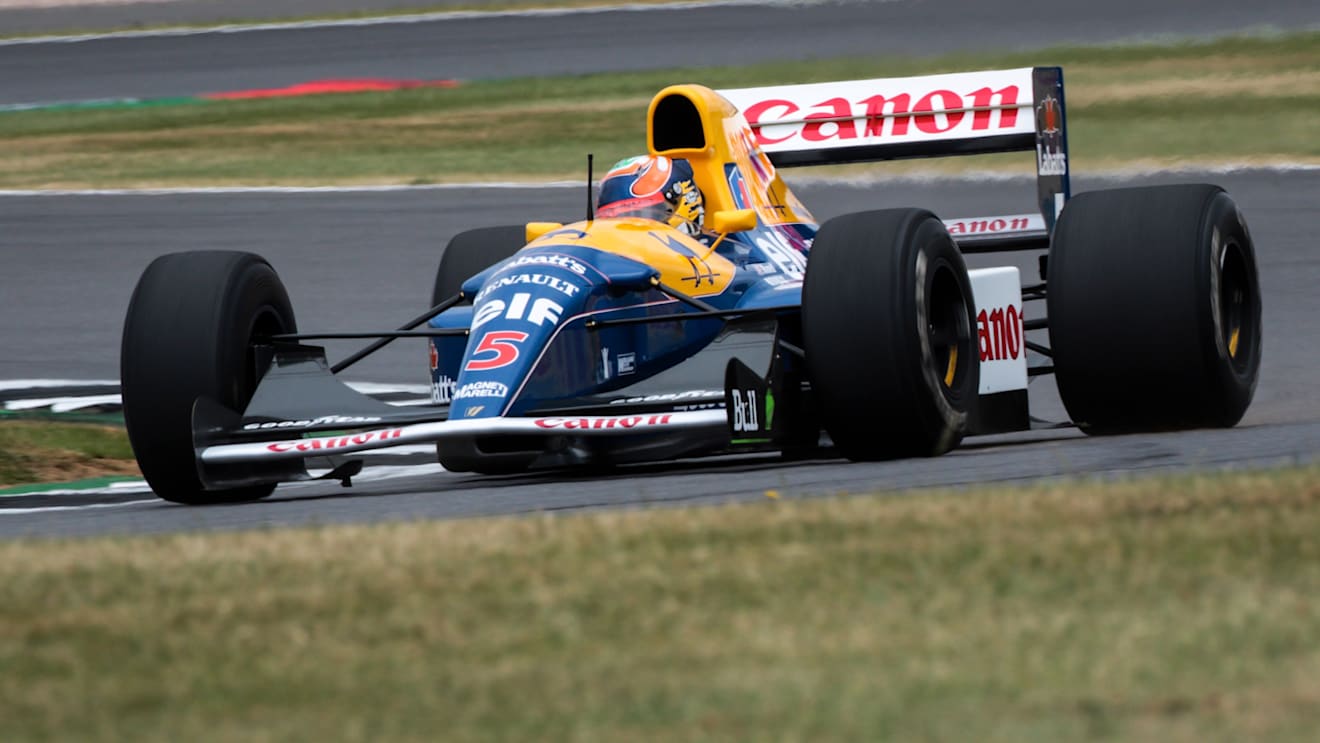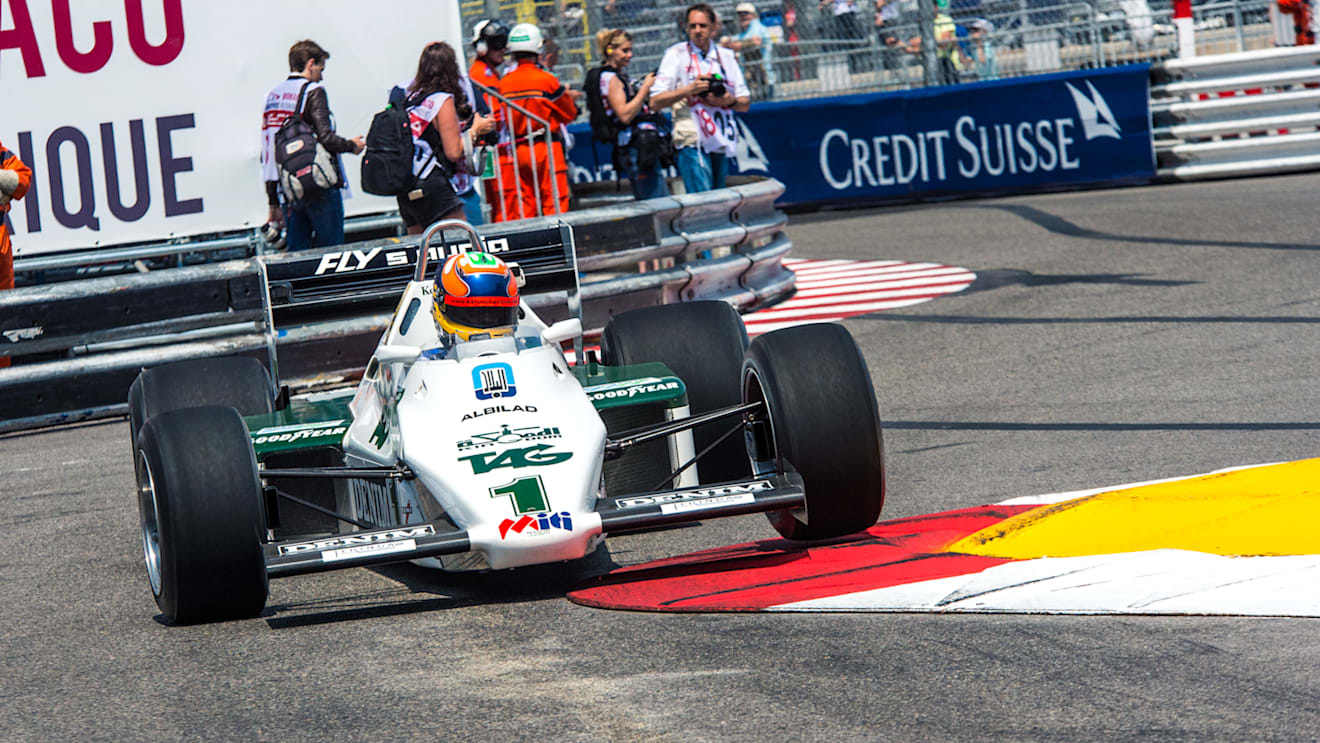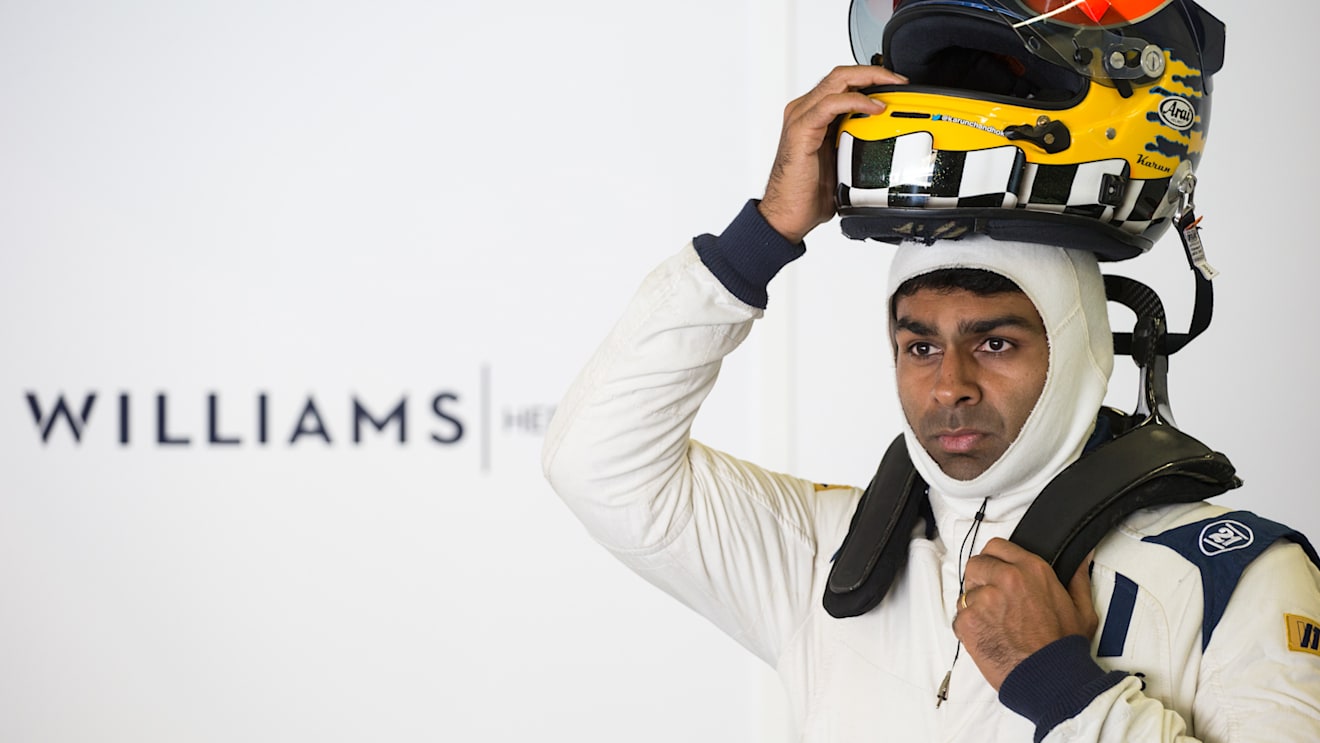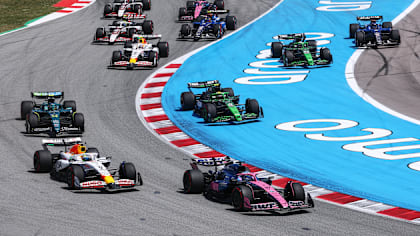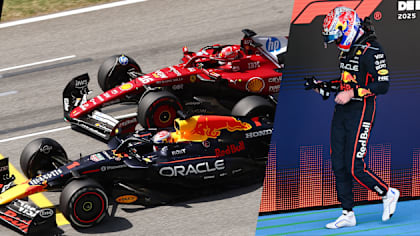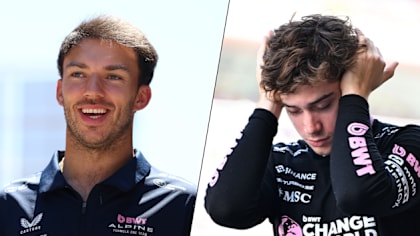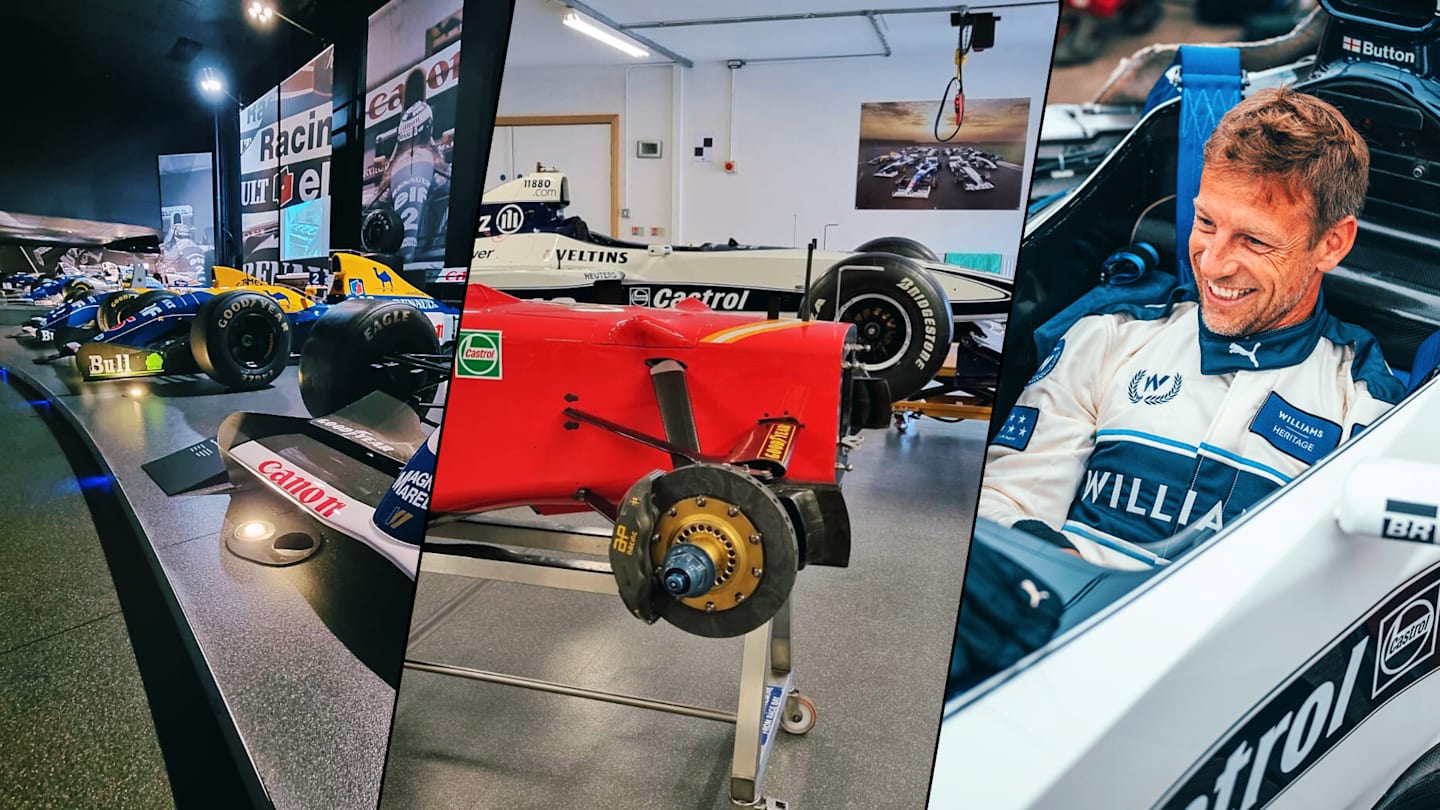
Feature
EXCLUSIVE: From title winners to record-breakers – How Williams Heritage keep the team’s ‘Crown Jewels’ in tip-top condition

Share

Williams boast one of the richest histories in the F1 paddock, sitting third in the all-time list for Grands Prix entered and joint second in terms of constructors’ championships won. Making their full-scale arrival back in 1978, the outfit have produced a selection of iconic cars over the years, plenty of which – thanks to Williams Heritage – are still being shown off as museum pieces and driven at tracks today. F1.com paid a visit to the division to find out what’s involved...
It’s a typically busy weekday in Grove as the 2024 campaign enters its closing stages. While several hundred employees are hard at work preparing Williams’s current F1 challengers, another much smaller group is similarly flat-out keeping machines from their previous eras alive.
F1.com is greeted at the doors of the Williams Experience Centre by Jonathan Kennard, the former professional racing driver – once a Formula Palmer Audi champion, British F3 race winner and 24 Hours of Le Mans entrant – who now serves as the company’s Heritage Director.
Preserving Williams’ legacy
Williams Heritage was created in 2014 to, in their own words, “manage, preserve and celebrate Williams’s iconic legacy”, with nine constructors’ championships, seven drivers’ championships and 114 race wins being achieved across an almost 50-year spell in the top echelon.
Kennard took on the main role a year ago, having previously built and managed his own historic F1 events company, which involved acquiring and restoring historic cars, and been personally connected to Williams in the past when he spent 2008 as one of their test drivers.
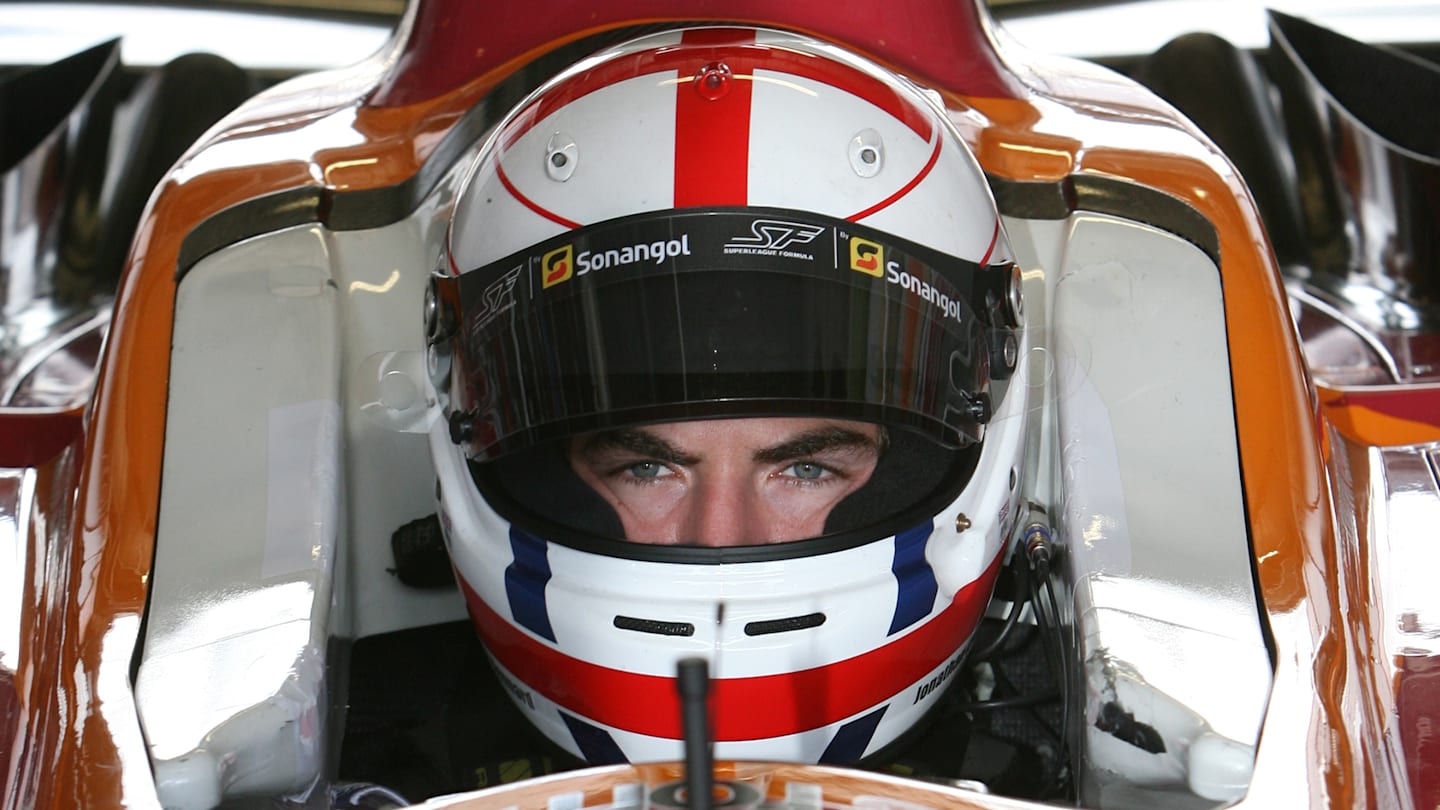
Kennard was a successful racing driver before immersing himself in the world of historic F1 machinery
As we walk through corridors lined with special photographs, chassis names, driver profiles and milestone moments, Kennard proudly points to the FW30 contender he drove – and that Nico Rosberg took to podium finishes at the Australian and Singapore Grands Prix.
Waiting for us a little further away are two more crucial members of the operation, namely Heritage Car Build Assembly Manager Jim Barker, who has been in the Williams family since 1991, and Heritage Chief Engineer Chris Brawn, who started out in the F1 design office in 1999.
“I do genuinely get emotional about it,” says Barker, as we sit down to discuss all things Williams Heritage and the importance of keeping late co-founder Sir Frank Williams’ legacy alive. “I started here when I was 19 years of age and I’m now in my 50s, so well over half my life has been invested in these cars.
“I was very fortunate to have an incredibly close relationship with Frank. He was an amazing person. Now that he’s no longer here and we are in the ownership of a different group of people, it doesn’t really change how you feel. The cars are the ‘Crown Jewels’ of this company and some of the most iconic cars to ever grace the grid in F1. We’re very proud of them, and it’s a lovely thing to be enthusiastic about your work.”
Restoration, servicing and more
So, what exactly does work look like for the Heritage team?
As well as maintaining exhibits for their in-house museum, which takes guests on a jaw-dropping journey from that very first FW06 through to their recent turbo-hybrid creations, Williams are making more and more cars available for private ownership and involvement in historic motorsport events around the world.
The cars are the ‘Crown Jewels’ of this company and some of the most iconic cars to ever grace the grid in F1. We’re very proud of them, and it’s a lovely thing to be enthusiastic about your work.
Jim Barker
It means those with the finances to do so can, quite literally, own a piece of Williams history, either for show in their personal garage or to drive at track days and public events – depending on the wish-list, Heritage can provide expert restoration, service and maintenance, running and logistical support, driver coaching and much more.
“Why wouldn’t you own a Williams if you could afford to do it?” Brawn smiles. “There are customers who return their cars to us for a service and we support with actually running them, and then there are the cars that belong to Williams that we run at different events.
READ MORE: Playing the long game – How new boss James Vowles is plotting Williams’ return to form
“An average day? There are different things coming up all the time. Before moving to Heritage, I was in the main design office for 24 years, working on a range of projects to begin with, but then more specifically focusing on suspension. I really enjoyed it, but what’s nice about Heritage is you get involved with a wide range of cars – and the entire car.”
With this in mind, Barker notes that the Heritage team – based in a small workshop accessible from the museum – shares more than 100 years of Williams experience, a significant portion coming from his own stint on the race team and time working alongside drivers such as Nigel Mansell, Alain Prost, Ayrton Senna, Damon Hill, Jacques Villeneuve, Jenson Button and Juan Pablo Montoya.
“Whether it be trying to remember the inner workings of a 33-year-old differential or a 15-year-old hydraulic assembly, at the moment, there’s nothing that’s beyond us – we always rise to the challenge,” he comments. “It’s so exciting to be involved in, because these cars are so complex.
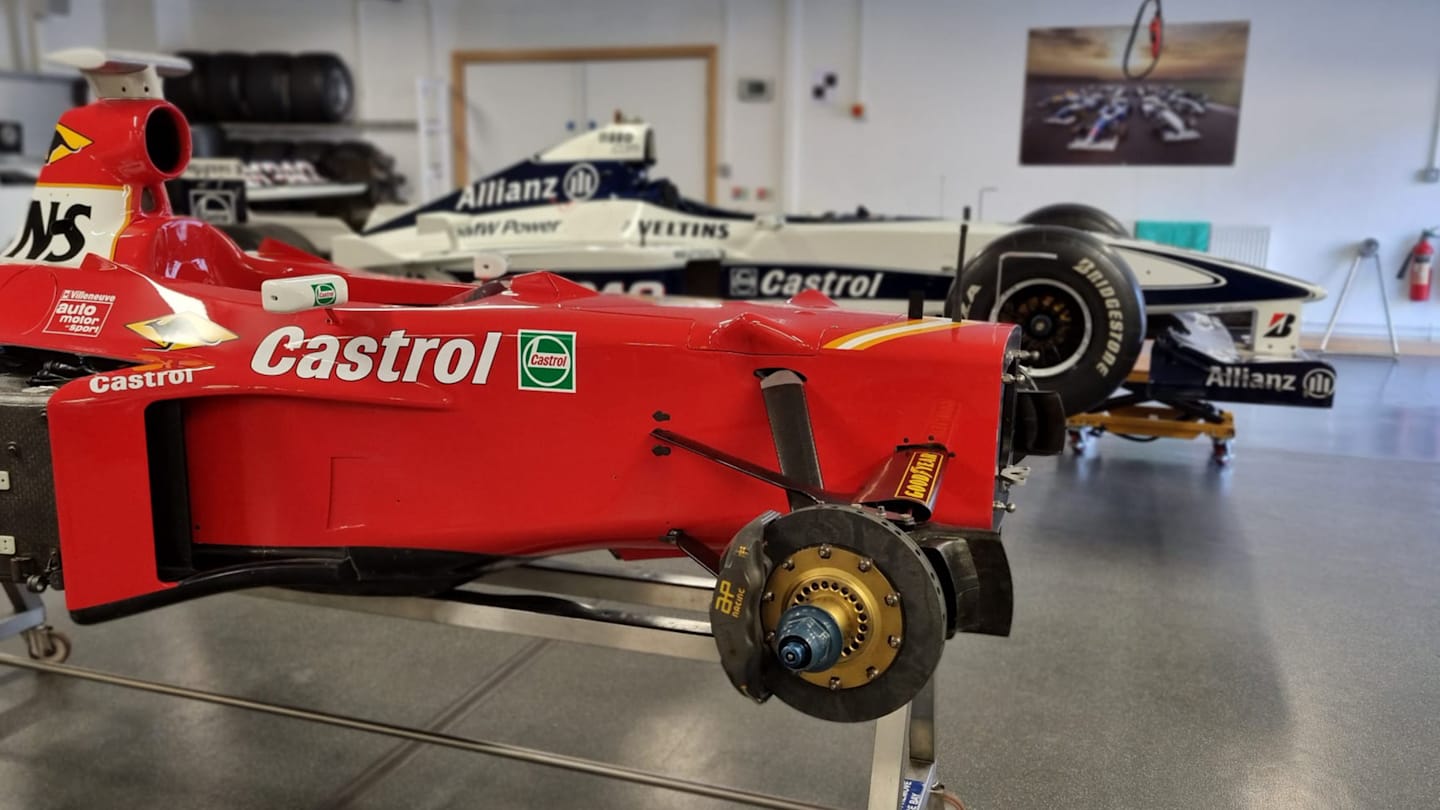
A peek inside the Williams Heritage garage, which at the time included Button’s FW22 from his rookie 2000 season
“Some of our biggest challenges are the smaller parts, the bearings and seals from 20 or 30 years ago that we took for granted would be available now, and they aren’t. So, Chris and his design team have to start looking at re-engineering things. Everybody has to be incredibly adaptable; it’s very varied, it’s very challenging, but ultimately incredibly rewarding.
“Any time we recommission a car and hear it fire into life after it’s been dormant for a long period of time is a particular highlight. Safety is the absolute paramount thing throughout, and we work closely with Chris’ team to make sure that the cars are structurally sound – safe for the driver, safe for spectators at events and anyone else that’s around them.
“When a car gets signed off for an event like the Goodwood Festival of Speed, and we’ve had that fan engagement and the compliments, or if we’ve finished a service and restoration for a private owner, and you either strap them into it for the first time or see their face when they’ve just come back from their first run, it’s really, really fulfilling.”
Montoya and Button’s reunions
One happy ‘customer’ at Goodwood last summer was the aforementioned Montoya who, supported by the car’s current owner, had an emotional reunion with his 20-year-old FW26 – which he piloted to victory in the 2004 Brazilian Grand Prix before joining rivals McLaren.
“Getting that car back into perfect running condition and reuniting it with its original driver was pretty special,” says Barker with another grin on his face. “Juan is a great guy and any of those V10s are pretty emotive. Certainly, the BMW era cars were incredible – they are blisteringly quick, powerful cars.
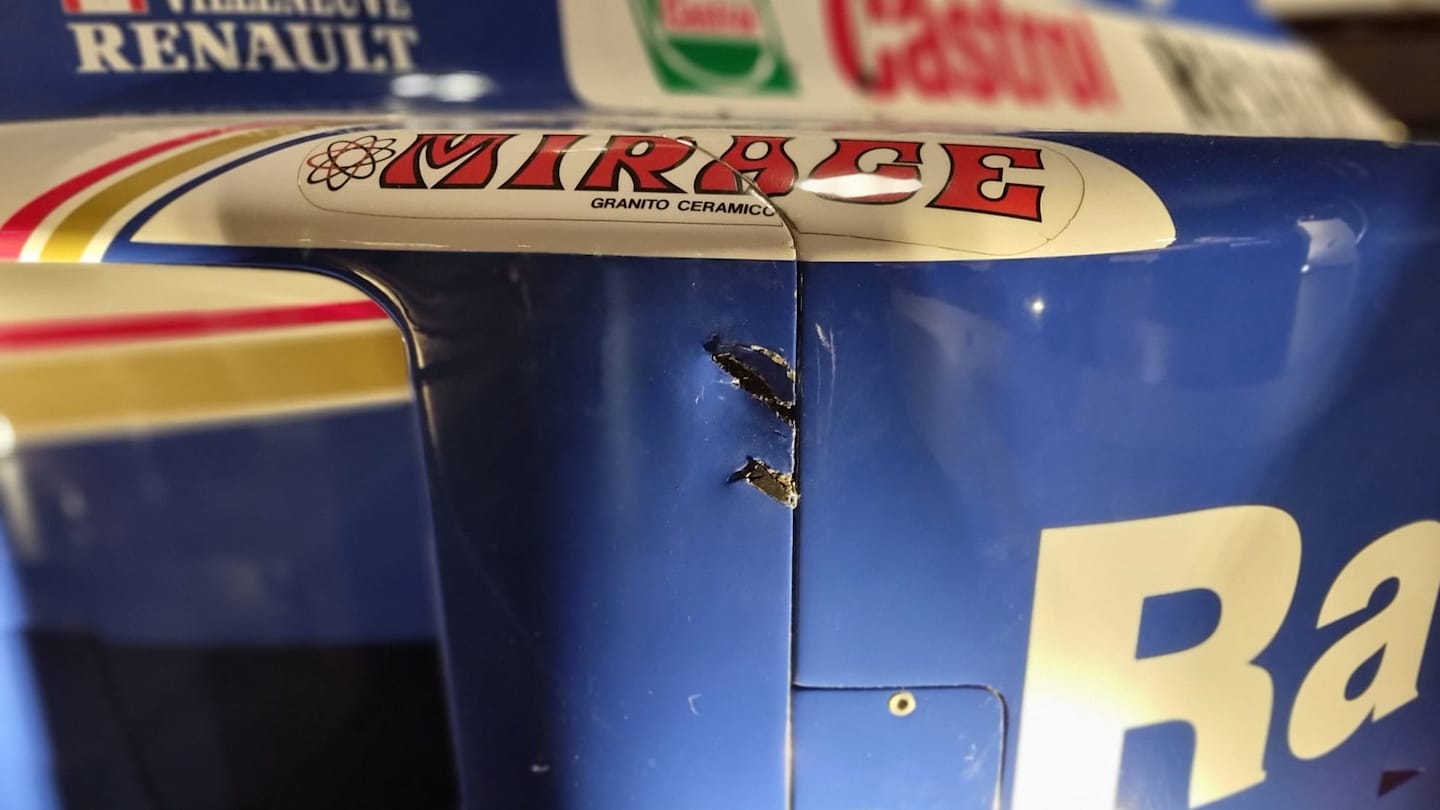
One noticeably damaged car is featured in the Williams museum, as per former team chief Patrick Head’s orders for historical purposes – the FW19 driven to the 1997 title by Jacques Villeneuve, via a controversial clash with Ferrari rival Michael Schumacher at the season-ending European Grand Prix
“What we’re really excited about now is building substantial partnerships with previous engine suppliers. So, when we were previously classed as a works team, building incredibly strong relationships with those companies again, as the engine is very much the heart of an F1 car.”
Another standout moment from 2024 came when Button returned to the cockpit of his first-ever F1 car – the 2000-spec FW22 – at the British Grand Prix. Not only was it the exact chassis used on debut in Australia, but it had also not been driven in any capacity since the end of that breakthrough rookie campaign.
WATCH: Top 10 moments of Jenson Button brilliance
“It was the first car that I had any real design involvement with,” says Brawn. “I was responsible for a number of the areas of that car, so it was great to be involved with the rebuild, re-engineering of some of the suspension parts, recommissioning the engine with the BMW support team, and getting it running again.
“The day was affected a bit by the weather, but we took various sets of tyres with us to enable us to run in any conditions, and we did get some running in, which was great. Jenson was absolutely buzzing when he got out of the car – he really was on a huge high.”
Williams’ own TARDIS
It’s worth noting that all of these restorations, services and track runs, as well as the purchasing experience for customers, are enhanced by Williams’s all-encompassing archive – one that, according to Kennard, includes detailed design and running information for “every chassis, every test and every race throughout our entire history”.
1 / 2
“Our archive is really important and I find it absolutely fascinating,” adds Brawn. “All of the test and race reports, the design information, the green sheets, we hold them on file and can access them whenever we want, as well the original paper drawings to help remanufacture the cars or re-engineer components to enable the car to run.
“The green sheets tell you the driver involved, the time of day, what the weather was like, what the ride height was, what the camber was, what the wing level was, any problems they had… One of the sheets I saw recently was Damon’s from when he won the championship in 1996, with a note on the bottom from the race engineer saying, ‘P1 – world champ!’”
F1 ICONS: Damon Hill on his father, two-time world champion and triple crown winner Graham Hill
Such a detailed back catalogue does, however, come with its dangers…
“Unfortunately, it’s a bit like a TARDIS!” Barker laughs, in reference to the hit time-travelling television show Doctor Who. “It’s truly breathtaking to see what we’ve got. When you go in there, you do tend to lose half of your day, because you open a folder and go, ‘Oh my God, I remember that!’
“We can then offer copies to a potential owner. We don’t just go, ‘Your car was used in nine events’, and that’s it. We can say, ‘We’ve got an FIA official slip from the weighbridge; during the warm-up for that race, it weighed 601kg’. So, as an owner, you don’t just buy a car off us, you buy the car, its history and basically access to all of its records.
Jenson Button on 'making more memories' in his FW22 at Silverstone
“I think that’s why our owners do get this emotional connection. We find most of our owners buy the car and then want to find the suit and the helmet that goes with it. We also provide them with a beautiful, informative book about their car, and it suddenly becomes much more. It’s a true piece of history.”
Chandhok’s dream driving role
Alongside Kennard, Barker and Brawn, another key part of the Heritage team is the division’s own test driver, with those duties falling to ex-F1 racer Karun Chandhok, who first got involved in 2016 when Jonathan Williams, son of Frank, offered him a role that combined shaking down cars, coaching customers and acting as a consultant.
“It’s an enormous privilege to have the opportunity to be the official Heritage driver for the team,” says Chandhok. “I grew up in an era when Williams were one of the dominant teams in F1, and getting to drive the cars that took Mansell, Prost, Hill and Villeneuve to the championship has been a magical experience.
“I’m a huge fan of the history of the sport, but I also love the technical side. Being able to experience the evolution of F1 from the cockpit has been both enjoyable and fascinating. When you drive cars from the early 1980s before the carbon monocoques were introduced, you realise just how much more dangerous that era was.”
On his highlights so far, he continues: “I got to drive Keke Rosberg’s 1983 Monaco Grand Prix-winning FW08C around Monaco, which was pretty special, but I think the most special experience I’ve had was getting to demonstrate Mansell’s title-winning FW14B at the British Grand Prix on Sunday morning at Silverstone with the grandstands full of people.
1 / 3
“I often say that I believe 2004 was the peak of F1 performance with cars that were only 605kg but with 950bhp from the BMW engine, which still revs to nearly 20,000 RPM. Driving the car that Montoya won the final race of 2004 with in Brazil was one of the most awe-inspiring experiences I’ve ever had as a driver.”
As he approaches his 10-year anniversary in the role, which is combined with track design work and punditry for the Sky Sports F1 channel, Chandhok looks forward to plenty more memorable moments behind the wheel of iconic Williams cars.
“When the family sold the team to Dorilton Capital, I did wonder if the new owners would be interested in Heritage,” he says. “Despite the obvious challenges of rebuilding the current race team, it’s been great to see that the management are very supportive. They’re very aware of how important this history is to the Williams fans around the world.”
The past, present and future
Chandhok’s remarks are echoed by Barker, who points to the enthusiastic involvement of James Vowles since the former Mercedes strategist became Team Principal at Williams in early 2023 – the part-time racer even hopping into a few cars himself.
“It’s nice for us to see that he’s got a passion for Williams Heritage,” Barker comments. “Obviously, his main focus is on returning the team to winning ways, but it’s also really encouraging to see his desire and his fascination with the older cars. We find him from time to time in the museum because he’s a fan of cars.
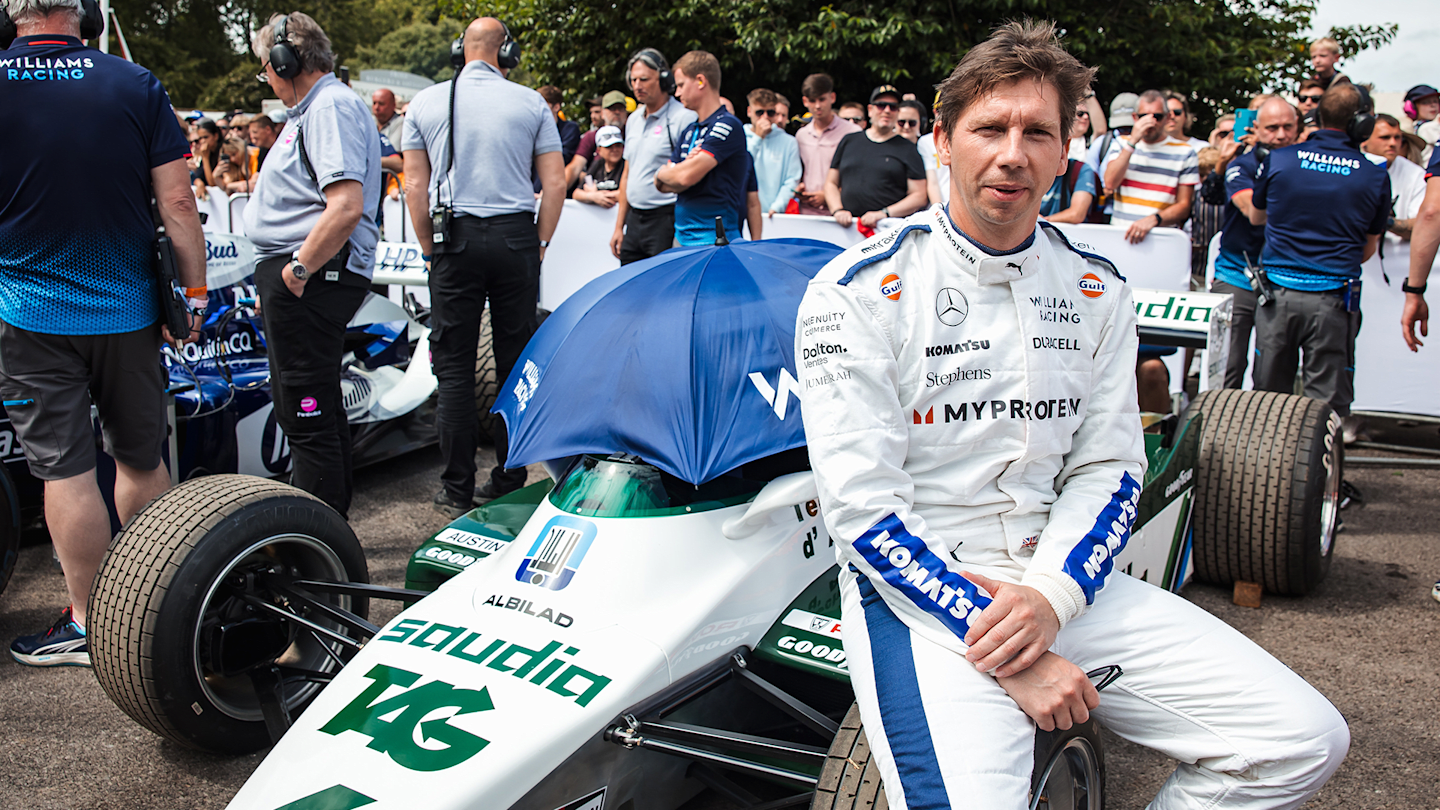
Williams team boss Vowles has already sampled some of the outfit’s historic cars
“We had a wonderful celebration in the museum recently on the Renault engine years, so from 1989 through to the end of 1997, and James talked passionately about that era. Basically, most of those cars were the catalyst for what he does today; that was what built the desire in him to want to dedicate his life to motorsport and reach the level that he has.
“The first time he actually drove a Williams was not the most overly glamorous occasion! There were three of us in a white van and a trailer, and we went off to an airfield, but it was really nice to be able to welcome him back off the apron and say, ‘Well done, you’re a Williams driver’. I think that meant a huge amount to him.”
As our conversation wraps up, Barker ponders what might be on the horizon for both the Heritage group and the current day, Vowles-led Williams F1 operation – the former fiercely protecting decades of history and the latter attempting to write a new chapter of success.
“On the Heritage side, we’re relishing bringing more of our cars back to life and putting them back out on track for customers to really enjoy them,” Barker says. “And, for all of us who are so passionate about this company, for all of us who have put so much of our lives into it, all we want to see is Williams win again. It certainly seems like we’re heading in the right direction, so it’s brilliant to be part of it.”
YOU MIGHT ALSO LIKE
News ‘I lost out to the better guy’ – Norris ‘confident’ he can improve after being beaten by Piastri in Barcelona
Feature What the teams said – Race day in Spain
FeatureF1 Unlocked MONDAY MORNING DEBRIEF: Verstappen made contact with Russell and Leclerc – but why were they racing each other in the first place?
News Gasly ‘relieved’ as late Safety Car in Spain leads to points as Colapinto identifies key area to improve
